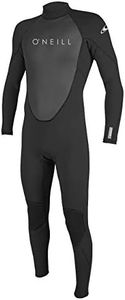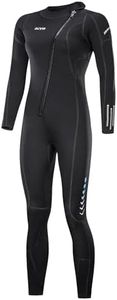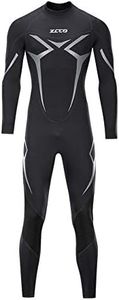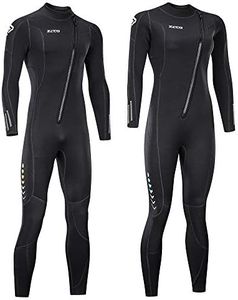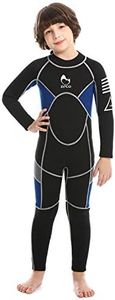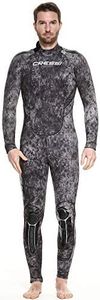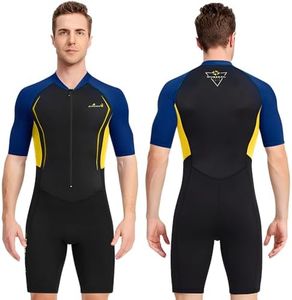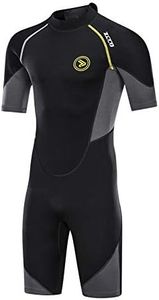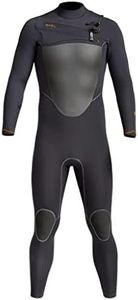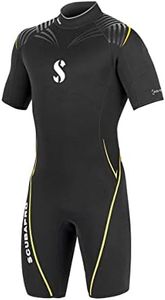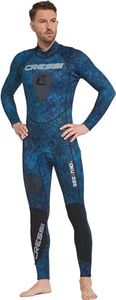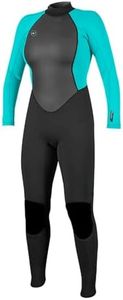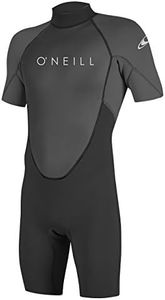We Use CookiesWe use cookies to enhance the security, performance,
functionality and for analytical and promotional activities. By continuing to browse this site you
are agreeing to our privacy policy
10 Best Scuba Diving Wet Suits
From leading brands and best sellers available on the web.By clicking on a link to a third party's website, log data is shared with that third party.
Buying Guide for the Best Scuba Diving Wet Suits
Selecting the right scuba diving wet suit is crucial because it will keep you comfortable, safe, and able to fully enjoy your underwater adventures. A good fit and the right features not only offer warmth and protection but can greatly enhance your overall diving experience. Understanding the key features will help you to match the suit with your diving style, water conditions, and personal preferences.ThicknessThe thickness of a wet suit is measured in millimeters and directly influences how warm you stay in the water. Thicker suits, such as 5mm or 7mm, are warmer and designed for cold water dives, while thinner suits like 2mm or 3mm are suitable for warm water. The right thickness depends on where and when you'll be diving most frequently; choose a thicker suit if you get cold easily or plan to dive in cooler waters, and a thinner one for tropical or summer locations.
MaterialMost wet suits are made from neoprene, a flexible, insulating material. Higher quality neoprene is stretchier and more comfortable, offering better movement and a snug fit. Some suits may also have extra linings for added warmth or faster drying. If you want maximum comfort and mobility, pay attention to the stretch and softness of the neoprene, and if you’re sensitive to cold, look for suits with thermal linings.
FitA proper fit ensures the wet suit traps a thin layer of water between your body and the suit, which your body heats up for insulation. A suit that is too loose will let cold water move in and out, reducing warmth, while one that is too tight can restrict movement and breathing. Always try on or check sizing charts, making sure there are no major gaps at wrists, ankles, or neck, but without pinching or discomfort. Your body shape and comfort preferences should guide your final fit choice.
Style (Shorty, Full, or Two-Piece)Wet suits come in several styles: shorty (short arms and legs), full (covering entire arms and legs), and two-piece versions. Shorties are best for warm water and offer more freedom of movement, while full suits provide better protection from cold and hazards like stings or scrapes. Two-piece suits can combine flexibility with warmth, letting you adapt as conditions change. Pick a style based on the water temperatures you’ll dive in and the kind of protection or comfort you’re looking for.
Zipper Type and PlacementThe zipper on a wet suit affects both how easy it is to get on and off and how much water can enter. Back zippers are traditional and easy to use, but chest zippers or zip-free designs can offer a closer fit and less water flushing. If you value convenience, a back zipper may suit you, while if you prefer maximum warmth and minimal water entry, consider front zippers or newer zip-free options.
Seam ConstructionHow the seams are joined affects both comfort and insulation. Flatlock seams are common in thinner suits and work well for warm water, but may let water seep in. Glued and blind-stitched (GBS) or taped seams are more watertight and warm, suited for colder dives. If you often dive in chilly water or want less water leakage, lean towards GBS or seams with taping, but for warm locales, simpler seams are often comfortable enough.
Additional Features (Knee Pads, Reinforcements, Pockets)Some wet suits come with knee pads, reinforced seat or shoulder areas, or even utility pockets. These extras provide protection and durability, especially if you expect to kneel on rocky surfaces, carry gadgets, or want your suit to withstand lots of use. Choose additional features based on your diving habits and whether you value extra protection or convenience.
